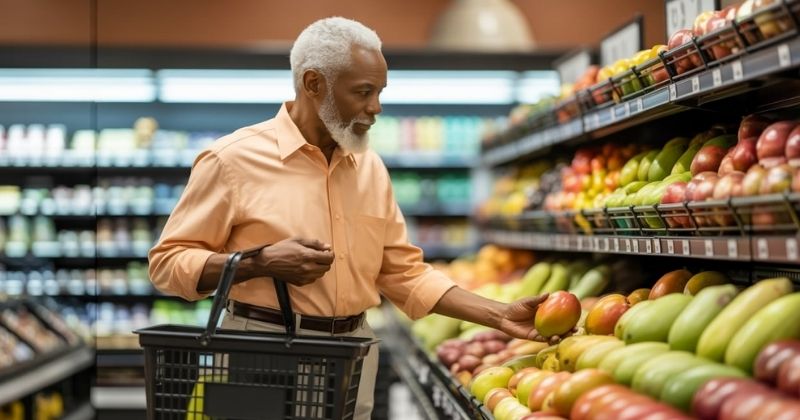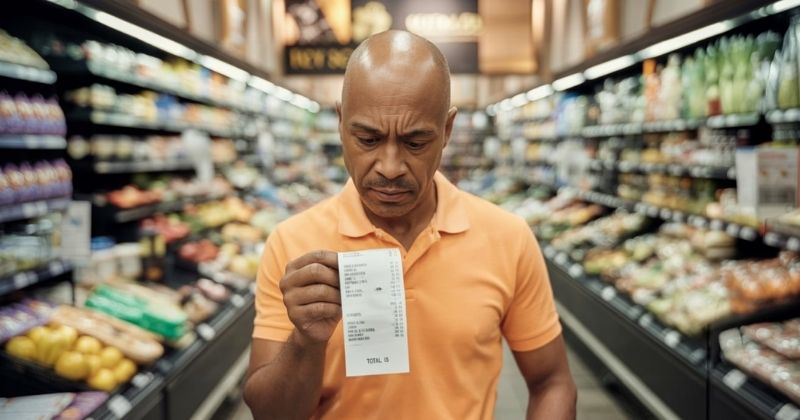
South African families are likely to face further financial strain at retail checkouts following the recent increase in fuel levies. The rise is anticipated to cause a broad-based escalation in food prices, adding pressure to already stretched household budgets. This comes at a time when household disposable income is already shrinking due to rising transport, electricity, and basic service costs, making food inflation an even heavier blow for working-class families.
Key Takeaways
- Fuel Levy Hike Will Drive Food Price Increases: The recent increase in petrol and diesel levies is expected to raise production, processing, and distribution costs, which will likely result in higher food prices across South Africa.
- Low-Income Households Most Affected: Vulnerable communities, particularly in rural and low-income areas, are set to bear the brunt of these increases, as they already spend a large share of their income on food and transport.
- Food Security Risks Are Growing: While South Africa produces enough food to meet national demand, affordability remains a major concern. Continued input cost hikes could reduce local production and deepen food insecurity.
About Arcadia Finance
Easily secure your loan with Arcadia Finance. There are no application fees, and you can choose from 19 trusted lenders who all comply with South Africa’s National Credit Regulator standards. Experience a smooth process with reliable options tailored to your financial goals.
This warning was issued by Thabile Nkunjana, a senior economist and trade researcher at the National Agricultural Marketing Council. He cautioned that the implications of this fuel policy adjustment would extend far beyond the pump, affecting various sectors and ultimately reaching the consumer. He painted a picture of a cascading cost crisis, where every rand increase in fuel echoes through multiple economic layers, compounding inflationary pressure on essential goods.
The recent fuel levy increase raised the general levy on petrol by 16 cents per litre and on diesel by 15 cents per litre. As a result, the total fuel levy now amounts to R4.15 per litre for petrol and R4.02 per litre for diesel. These figures are significant, given the already elevated fuel prices that South Africans are contending with. This increase pushes South African fuel levies among the highest in emerging markets, intensifying debates about the sustainability of the country’s tax structure on energy.
According to Nkunjana, the ripple effects of this decision will be most acutely felt by the country’s most economically vulnerable groups. He highlighted that fuel plays a critical role in agriculture, a sector that is not only heavily reliant on mechanised operations but also one of the highest consumers of fuel nationally.
With millions already relying on social grants, any surge in staple food costs could erode food access for low-income households, worsening nutritional insecurity.

Mechanisation in Agriculture Increases Fuel Dependence
Nkunjana elaborated that the agricultural industry in South Africa is both large-scale and highly mechanised. The use of fuel-intensive machinery, such as tractors and harvesters, is central to farming operations. As fuel prices rise, the cost of using this equipment also climbs, thereby raising the total cost of food production. Some commercial farms consume thousands of litres of fuel weekly, and even a modest hike can drive operational costs up by hundreds of thousands of rands monthly.
Cost Increases Passed to Consumers
He noted that increased production costs in the agricultural sector are inevitably transferred to consumers through higher food prices. Farmers are already burdened by rising input costs, and fuel alone constitutes approximately 13 percent of total farming expenses in the country. This means that the price tag on everything from maize meal to fresh produce could soon reflect the growing burden borne by producers.
Multiple Pressures on Agricultural Producers
In addition to fuel costs, farmers are facing escalating prices for fertilisers, pesticides, and electricity. Nkunjana pointed out that these combined costs place substantial financial pressure on food producers, which could ultimately reduce profitability and discourage production. Smaller farmers, in particular, may be forced to cut back on planting, which could have a knock-on effect on seasonal employment in rural areas.
Impact Beyond the Farm Gate
Nkunjana was clear that the effects of the fuel levy increase will not end with production. Fuel is also a critical component in the processing, packaging, and distribution of food products. From transporting crops to warehouses, to processing facilities, and finally to retail outlets, each step requires energy, and rising fuel prices add costs at every stage. Cold storage, milling, and logistics companies are already facing margin pressures, and any further cost absorption could trigger layoffs or service cutbacks.
Knock-On Effect Along the Food Value Chain
He explained that every link in the food supply chain depends on fuel. As the cost of fuel rises, the expense of moving, storing, and selling food also increases. This results in higher retail prices, a situation that poses particular challenges in a country where large portions of the population already struggle to afford basic necessities.
Bread, cooking oil, and other household staples are likely to become less affordable, fuelling social discontent and widening inequality gaps.
Lower-Income Households at Greatest Risk
Nkunjana emphasised that the impact would be especially severe for low-income and rural households. These communities typically allocate a significant portion of their income to food and transportation, making them highly vulnerable to any increases in these categories. In some areas, food costs already exceed 60 percent of household budgets, leaving little to no room for savings or emergencies.
South Africa’s reliance on imported agricultural inputs such as fertilisers and pesticides further complicates the situation. These goods are influenced by volatile global prices, and when combined with rising fuel costs, they create a scenario where domestic production becomes more expensive and potentially less viable. The weakening rand further amplifies import costs, putting pressure on producers who are already navigating thin profit margins.
Historical Trends Point to Risk of Reduced Output
Drawing comparisons with the COVID-19 pandemic period, Nkunjana recalled how increased input costs during that time resulted in higher import volumes and a drop in local production. He warned that similar outcomes could occur if the current pressure on producers is not addressed. Any decline in local production could also expose the country to external supply shocks, such as regional droughts or geopolitical instability, which could disrupt imports.
Irrigation and Cold Storage Also Affected
The combined impact of rising fuel and electricity prices is especially troubling for sectors reliant on power-intensive systems. Nkunjana noted that irrigation systems, which are essential in many farming operations, consume substantial amounts of electricity. Cold storage facilities, another vital component of the food chain, are also energy-heavy. This twin cost spike risks making certain types of high-yield crop farming financially unviable, particularly in arid provinces like the Northern Cape and parts of Limpopo.

Producers Under Severe Financial Strain
The dual burden of increased fuel and electricity prices places a serious financial squeeze on agricultural producers. This could have long-term consequences for the viability of farming enterprises across the country, especially for those operating on thin margins.
With credit conditions tightening and interest rates still elevated, many farmers may find themselves locked out of financing options, further compounding the crisis.
When asked about the broader implications for national food security, Nkunjana acknowledged that rising fuel-related costs could indeed pose a threat. While South Africa currently produces more food than it consumes and exports over half its agricultural output by value, affordability remains a major issue. Food insecurity could intensify in township and informal settlement areas, where economic opportunities remain limited and hunger levels are already high.
Affordability Is a Growing Concern
The problem is not the availability of food, but rather the ability of South Africans to pay for it. Even if local production remains strong, many households may find themselves priced out of essential food items due to continued inflation in transport and input costs. This affordability gap is also likely to influence political discourse, especially as the country heads into a period of potential policy realignment.
Nkunjana clarified that although no definitive link has yet been established between input cost hikes and a drop in local food production, the risk cannot be ignored. He pointed to international trends and historical patterns showing that substantial increases in input costs often lead to a decline in output. If food production drops while demand remains stable, prices could surge further, setting off a dangerous feedback loop in the economy.
Urgent Collaboration Required
To address these challenges, Nkunjana called for a coordinated approach involving both the public and private sectors. Immediate measures are needed to support farmers and protect consumers from further financial shocks, he said.
Proposals such as fuel rebates for farmers, temporary tax relief, or subsidies for critical inputs are now being floated within policy circles.
He concluded that failure to act could result in widespread consequences for the economy. The impact will not only be visible on supermarket shelves but will also ripple through employment, food access, and national economic stability. If not urgently managed, this situation could unravel progress made in agricultural development, job creation, and poverty reduction over the last two decades.
Conclusion
South Africa’s latest fuel levy increases are set to create a ripple effect throughout the agricultural and food supply chain, raising prices from farm to shelf. With input costs escalating and electricity prices adding further pressure, the situation threatens to strain both producers and consumers. The burden will fall hardest on already struggling households, heightening the risk of food insecurity. Without urgent intervention from both government and industry stakeholders, the country could face not only higher food prices but also reduced local production, job losses, and broader economic instability.
Fast, uncomplicated, and trustworthy loan comparisons
At Arcadia Finance, you can compare loan offers from multiple lenders with no obligation and free of charge. Get a clear overview of your options and choose the best deal for you.
Fill out our form today to easily compare interest rates from 19 banks and find the right loan for you.


